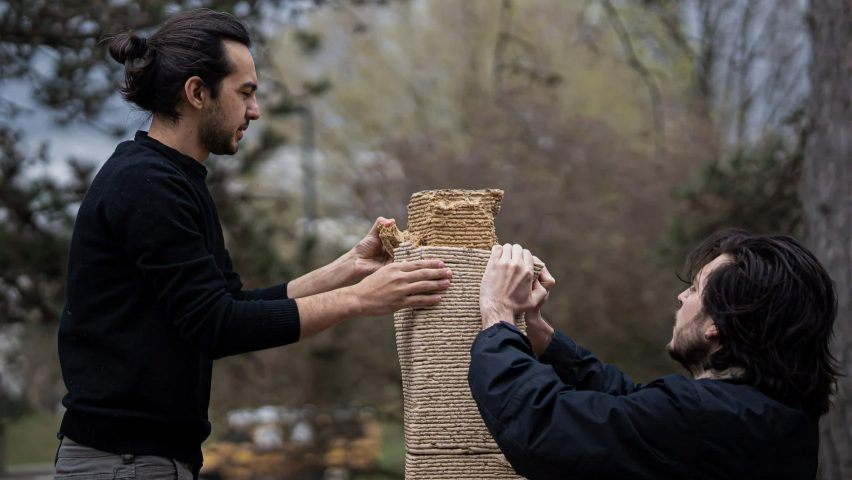
DART Lab creates biodegradable concrete casts using sawdust
A research team at the University of Michigan has created biodegradable formwork out of sawdust in an attempt to mitigate wood waste in the process of laying concrete.
The wood-based material is a result of the BioMatters project by the Digital Architecture Research and Technologies (DART) Lab at Taubman College of Architecture and Urban Planning.
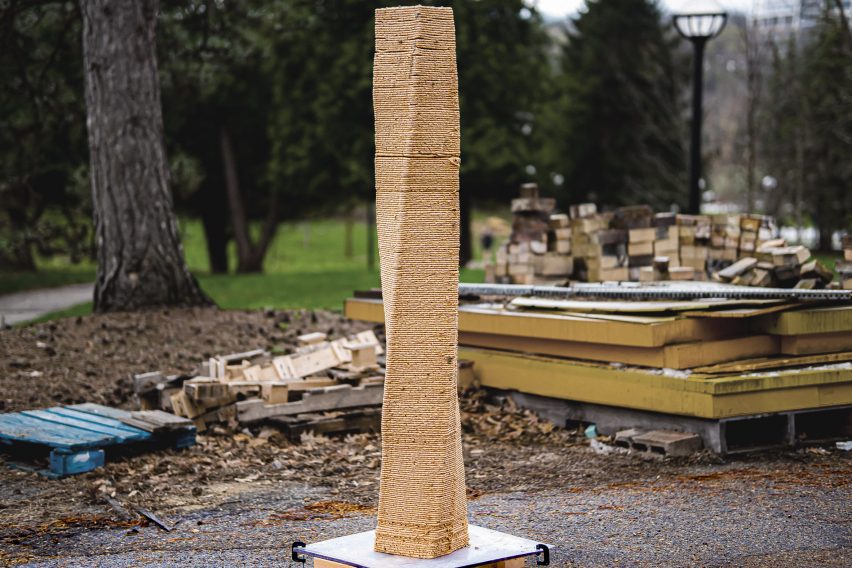
Led by DART director Mania Aghaei Meibodi along with researchers Muhammad Dayyem Khan, Tharanesh Varadharajan and Zachary Keller, the team sought to create a material to reuse industrial sawdust in order to lessen the waste created by formwork used in concrete construction.
The team mixed sawdust with biopolymers and additives to create its material, which can be moulded or 3D-printed into various shapes. In order to demonstrate its capabilities, the team used the material to create concrete formwork.
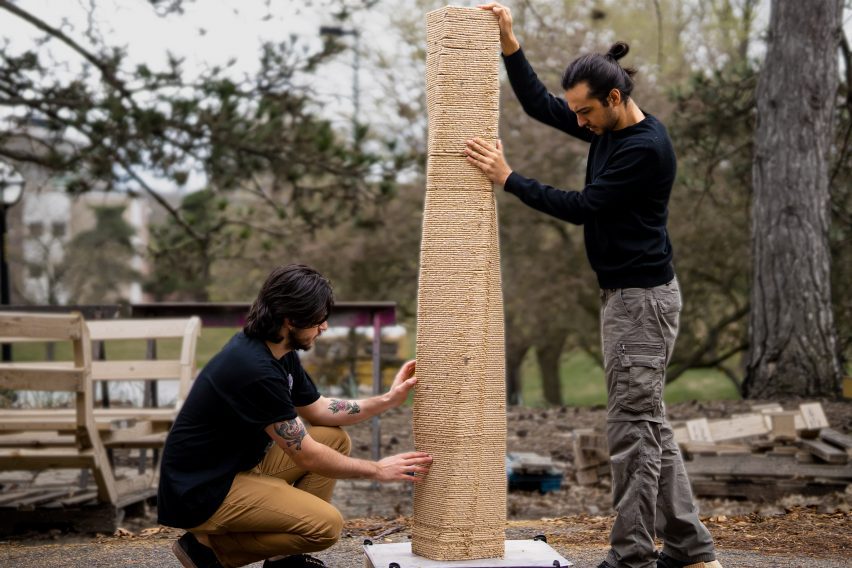
The team 3D-printed a 1.8-metre structural column, pouring concrete into its centre incrementally. After the concrete was dry, the sawdust formwork was peeled off to reveal the column.
The sawdust material was then saved and recycled by adding water in order to recreate the viscosity level required for 3D printing. Using this process, the team successfully reused the same material over 25 times to create additional columns.
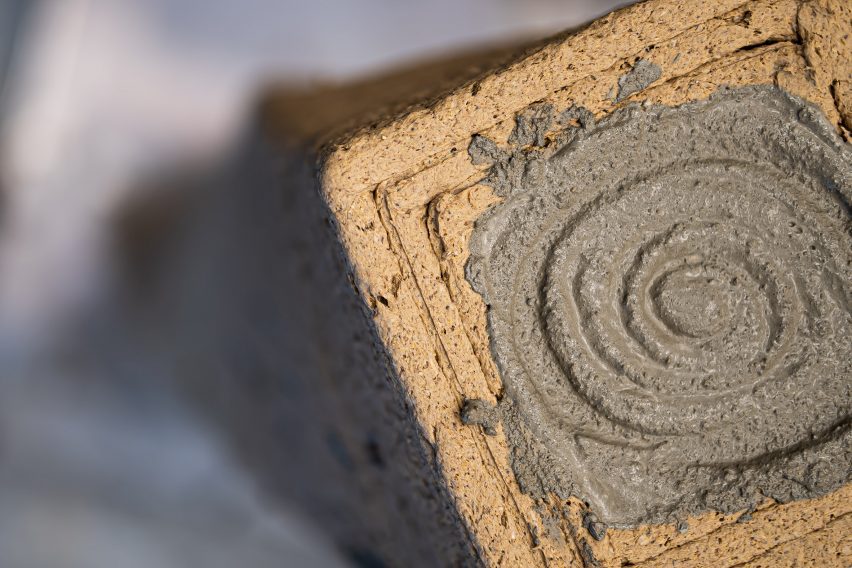
According to the team, 15 billion trees are cut down worldwide per year, which results in three million pounds of sawdust dumped into landfills in the United States.
The sawdust may often be burned as an alternative, which can cause environmental pollution.
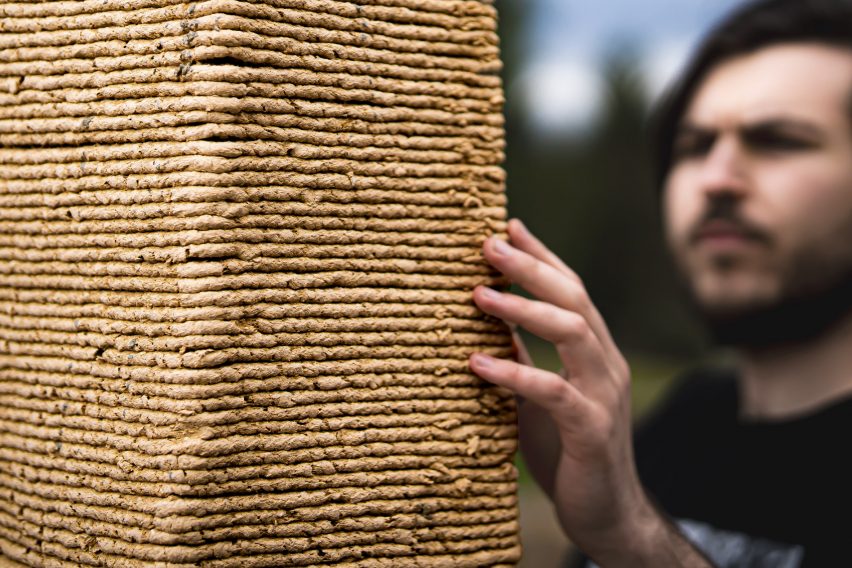
"It's like a precious material for me because you're cutting down a tree," said researcher Muhammad Dayyem Khan. "I think every particle of that tree should be reused if you're cutting it down."
According to DART Lab, formwork contributes to up to 40 per cent of concrete construction expenses and is usually constructed from wood. After its use on construction sites, the formwork is often discarded.
The team also plans to experiment with making larger structures with the material.
"For example, some structures can be printed in a big warehouse and then you just turn them back up," said Khan. "Just rotate them 90 degrees and you've got a bigger structure."
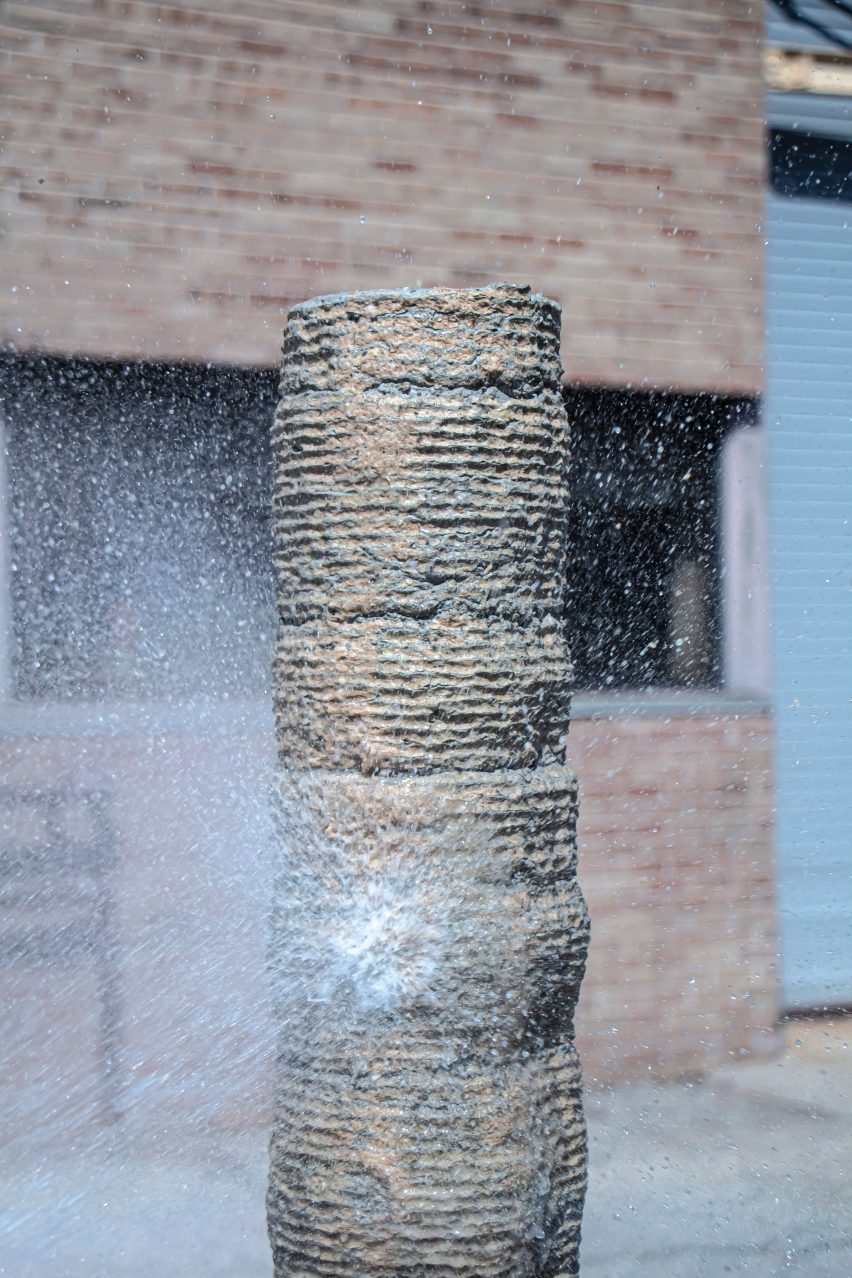
While the BioMatters team initially experimented with the material for formwork, it suggested that the potential reaches beyond just concrete construction.
"It can be anything," said Khan. "It can be small, decorative items. It can be furniture. It can be your walls, doors, windows."
The material can also be sanded and stained similar to wood in order to create a smoother finish. The team has yet to explore what woods perform best for the material.
For more projects that utilize sawdust, Designer Oh Geon also used it to create a blocky stool while Mater Design utilised the material for a re-released version of the Conscious Chair.
Photography courtesy of DART Lab.